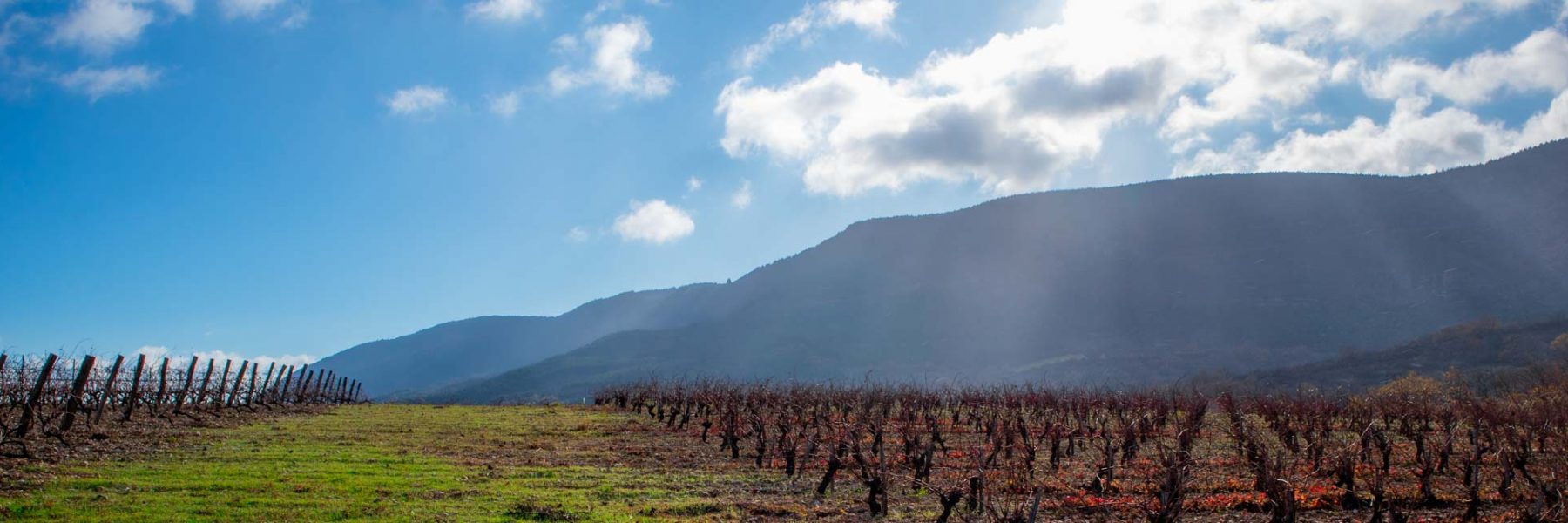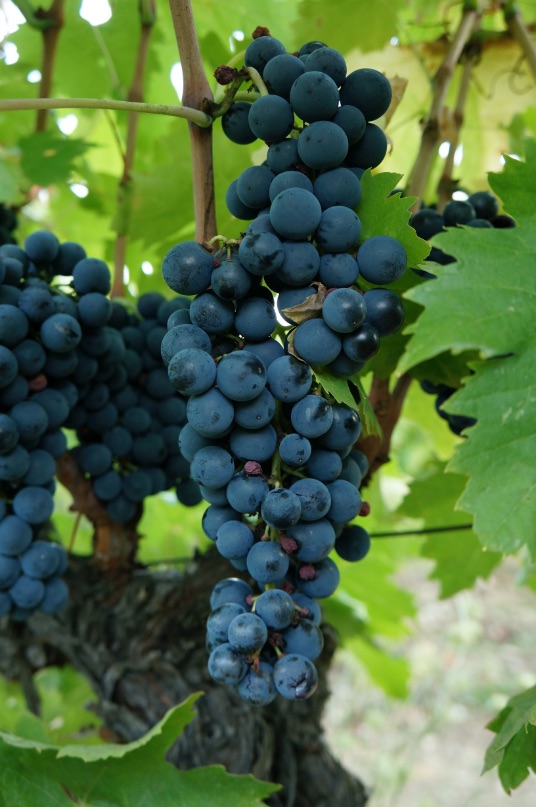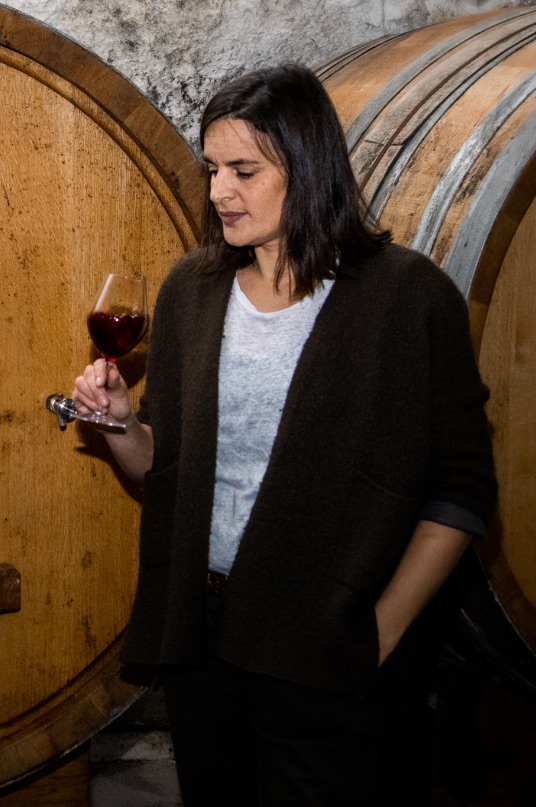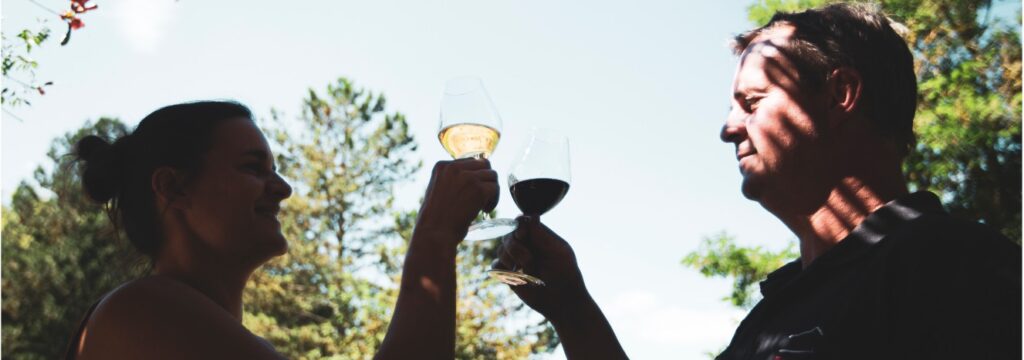
¨
A very rewarding learning
Originally from the south of the Charente maritime department near Bordeaux, I decided to follow my BTS certificate course in viticulture and oenology in Beaune where I was lucky to follow an enthusiastic teaching. In 2004, as part of the training, I did an internship at the Olivier Leflaive estate where I met Franck Grux who was an excellent trainee supervisor. Back home in Bordeaux from 2005 to 2006 to obtain the Enologist National Diploma, during which time I have the immense privilege of being welcomed 6 months by a certain Jean Louis Chave at Hermitage to be part of the 2006 millesime. I then immerse myself in the precision, the understanding of living organisms and the lunar calendar that dictate certain chores to be done to the vine as well as in the wine cellar.
Having obtained my diploma, I end up on the high-altitude terroirs of the Terraces du Larzac at the Le Pas de l’Escalette estate in 2007. I am captivated at first by the beauty and energy that these terroirs exude and very quickly by their excellent quality potential.
Beginning of 2008, I am fortunate to perfect my apprenticeship with Olivier Jullien at the Mas Jullien in Jonquières. I find in him my Master! Everything I do in the vineyard or in the wine cellar has meaning, the philosophy, the work, the wines and the man bring me to decide that it is time for me to set out on my own and it will be on the terroirs of Lauroux and Poujols.
The hardest part is still to come… find beautiful vines! And it is during the course of a walk (an itinerary suggested by a certain Olivier Jeantet), at the end of a small path in Lauroux that two parcels of Grenache impose themselves on me … they seemed to be waiting for me. My adventure can finally begin! Here comes the 2009 vintage…
A terroir of rare freshness
¨
Planted in the heart of the Cirque de Labeil between 350 and 450 meters, the vineyards of Clos Maïa grow mainly on limestone scree of the Larzac. It is the climate that drove me to choose these terroirs. With rainfall levels well above the regional average, combined with particularly draining soils, the vines have a continuous water supply but never in excess. The altitude of the vines offers cooler temperatures than elsewhere in the Terraces of Larzac, which is also found in the wines.
When we add to all these parameters a north wind that acts as a real natural antibiotic for the vines, we obtain the ideal place to conduct organic farming, which is essential if you wish to find taste and life in the wine. As proof of a newfound balance, weeds now grow naturally to create life at the heart of the vines. We respect the cycles of the moon and the winemaking is carried out, not overly so, using native yeasts to let the terroirs express themselves.

Plantées au coeur du Cirque de Labeil à quelques 450 mètres d’altitude, les vignes du Clos Maïa poussent principalement sur des éboulis calcaires du Larzac. C’est le climat qui a été décisif dans mon choix pour ces terroirs. Une pluviométrie bien supérieure à la moyenne régionale qui, ajoutée à des sols particulièrement drainants, apporte aux vignes une alimentation hydrique toujours présente mais jamais en excès. L’altitude des vignes offre des températures plus fraîches qu’ailleurs dans les Terrasses du Larzac, ce qui se retrouve d’ailleurs dans les vins.

Lorsqu’on ajoute à tous ces paramètres un vent du nord qui agît en véritable antibiotique naturel pour les vignes, on obtient le lieu idéal pour conduire une agriculture biologique, chose essentielle pour retrouver le vivant et la vibration dans les vins. Preuve d’un équilibre retrouvé, les herbes poussent naturellement pour créer de la vie au cœur des vignes. Les cycles des lunes sont respectés et la vinification est réalisée sans excès à l’aide des levures indigènes pour laisser les terroirs s’exprimer.
¨
Vinification waiting on the grapes

The plot-by-plot vineyard is spread out over 6 hectares composed of black Grenache, Cinsault, Black Carignan, Syrah and a set of old grape varieties for red wines and Grenache Gris, Chenin, Roussanne, Terret Bourret for white wines.
My encounter with Olivier Jeantet of Mas Haut Buis will push me a little higher up the mountains, especially up to La Vacquerie, a charming village of 137 souls perched at 680 meters above sea level. I found an old cut stone building built on buried boulders that would become my wine cellar.
The winemaking and extractions are gentle, the aim is to accompany more than to lead. The ageing of the Petit Clos is done in concrete vats, that of Clos Maïa in Austrian barrels of 20 hL. The whites are vinified and matured in 500L half-muids .

The plot-by-plot vineyard is spread out over 6 hectares composed of black Grenache, Cinsault, Black Carignan, Syrah and a set of old grape varieties for red wines and Grenache Gris, Chenin, Roussanne, Terret Bourret for white wines. My encounter with Olivier Jeantet of Mas Haut Buis will push me a little higher up the mountains, especially up to La Vacquerie, a charming village of 137 souls perched at 680 meters above sea level. I found an old cut stone building built on buried boulders that would become my wine cellar. The winemaking and extractions are gentle, the aim is to accompany more than to lead. The ageing of the Petit Clos is done in concrete vats, that of Clos Maïa in Austrian barrels of 20 hL. The whites are vinified and matured in 500L half-muids .
¨
In the cellar, it is the grapes that dictate the tasks.
¨

